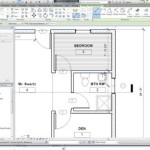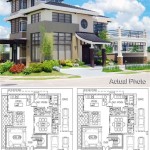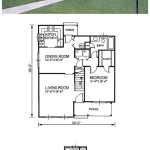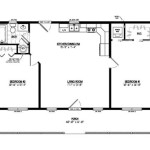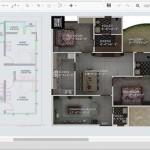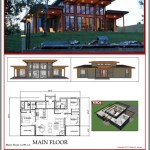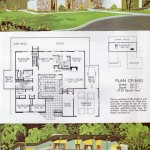Traditional Farm House Plans: A Timeless Design
The allure of traditional farmhouse plans remains strong for many homeowners. These designs evoke a sense of history, comfort, and connection to the land. The enduring popularity of the farmhouse style is rooted in its functionality, aesthetic appeal, and adaptability to a variety of landscapes and lifestyles. Traditional farmhouse plans, particularly those represented by models like "8211," offer a blueprint for crafting a home that balances rustic charm with modern convenience.
When considering a traditional farmhouse plan, several factors come into play. These include the size and layout of the home, the materials used in construction, and the overall architectural style. Understanding these elements is crucial for selecting a plan that meets both the aesthetic desires and practical needs of the homeowner. The subsequent sections will explore the defining characteristics of traditional farmhouse plans and highlight the key considerations for those looking to build or renovate a home in this style.
Key Features of Traditional Farmhouse Architecture
Several distinctive features define traditional farmhouse architecture. Analyzing these characteristics provides a comprehensive understanding of the style's essence, allowing for informed decisions when selecting a suitable plan.
One of the most recognizable features is the gabled roof. These pitched roofs, often with a prominent front-facing gable, are designed to shed snow and rain effectively, making them well-suited for regions with varying climates. The gables also provide ample attic space, which can be used for storage or converted into living areas. The use of durable roofing materials, such as asphalt shingles or metal, further enhances the practicality of this design element.
Another defining characteristic is the large, covered porch. This space serves as an extension of the living area, providing a place to relax, entertain guests, or simply enjoy the surrounding scenery. Porches are often adorned with decorative columns, railings, and comfortable seating, creating a welcoming atmosphere. The porch is usually situated at the front of the house, but it can also wrap around the sides or back, depending on the specific design of the farmhouse plan. The functionality of the porch extends beyond leisure; it offers protection from the elements and provides a transition zone between the interior and exterior environments.
The use of natural materials is also a hallmark of traditional farmhouse architecture. Wood, stone, and brick are commonly employed in the construction of these homes, both for structural elements and decorative details. These materials contribute to the rustic and timeless appeal of the farmhouse style. The integration of natural materials not only enhances the aesthetic but also promotes sustainability, as they are often sourced locally and require less energy to produce than synthetic alternatives.
Interior layouts in traditional farmhouses often prioritize functionality and flow. Open floor plans, connecting the kitchen, dining area, and living room, are common. This design promotes social interaction and allows for easy movement between different areas of the home. Spacious kitchens, often featuring large islands and ample counter space, are a central gathering point for families. The incorporation of elements like exposed beams, hardwood floors, and farmhouse sinks further enhances the rustic charm of the interior.
Windows play a significant role in farmhouse architecture, providing natural light and ventilation. Large, multi-paned windows are common, often adorned with simple, unadorned frames. The placement of windows is carefully considered to maximize sunlight exposure and provide views of the surrounding landscape. The use of energy-efficient windows helps to regulate the temperature inside the home and reduce energy consumption.
Adapting Traditional Farmhouse Plans to Modern Living
While traditional farmhouse plans evoke a sense of nostalgia, they can be easily adapted to meet the needs of modern living. Integrating contemporary amenities and design features allows for a seamless blend of the old and the new, resulting in a home that is both stylish and functional.
One way to modernize a traditional farmhouse plan is to incorporate energy-efficient technologies. This includes installing solar panels, using geothermal heating and cooling systems, and implementing smart home automation. These technologies not only reduce energy consumption and lower utility bills but also enhance the overall comfort and convenience of the home. Energy-efficient windows, insulation, and appliances further contribute to the sustainability of the design.
Another important consideration is the incorporation of modern kitchen and bathroom amenities. While maintaining the rustic charm of the farmhouse style, these spaces can be equipped with state-of-the-art appliances, custom cabinetry, and luxurious fixtures. The integration of features like walk-in showers, soaking tubs, and gourmet cooking equipment elevates the functionality and comfort of these essential rooms. The addition of a mudroom, a practical space for storing outdoor gear and preventing dirt from entering the main living areas, is another valuable adaptation for modern farmhouse living.
The layout of the home can also be modified to suit contemporary lifestyles. Open floor plans remain popular, but careful consideration should be given to creating distinct zones for different activities. This can be achieved through the use of architectural features like archways, columns, and changes in flooring. The inclusion of a home office, a dedicated space for work or study, is a common adaptation in modern farmhouse plans. This allows for a separation between work and personal life, promoting productivity and focus.
Exterior design can also be adapted to reflect modern sensibilities. While maintaining the classic farmhouse silhouette, the use of contemporary materials and finishes can create a more updated look. For example, incorporating metal accents, such as a metal roof or siding, can add a touch of industrial chic. The use of natural stone or brick can also be combined with contemporary siding materials to create a visually appealing and durable exterior. Landscaping can also play a role in modernizing the farmhouse style. The use of native plants, drought-resistant landscaping, and minimalist design elements can create a more contemporary and sustainable outdoor space.
Technology integration is another key aspect of adapting traditional farmhouse plans to modern living. Incorporating smart home features, such as automated lighting, security systems, and climate control, can enhance the convenience and efficiency of the home. The integration of wireless internet access and entertainment systems is also essential for modern lifestyles. These technologies can be seamlessly integrated into the design without compromising the aesthetic appeal of the farmhouse style.
Considerations When Choosing a Traditional Farmhouse Plan
Selecting the right traditional farmhouse plan requires careful consideration of several factors. These include the site conditions, the budget, and the desired features of the home. A thorough understanding of these considerations will help ensure that the chosen plan meets the needs and preferences of the homeowner.
The site conditions play a crucial role in determining the suitability of a particular farmhouse plan. The topography of the land, the orientation of the house, and the availability of utilities must all be taken into account. The plan should be adapted to the specific characteristics of the site, maximizing natural light, ventilation, and views. The soil conditions should also be assessed to ensure that the foundation is properly designed and constructed. The presence of trees, water features, and other natural elements should be considered when designing the landscaping and outdoor spaces.
Budget is another important consideration. The cost of building a traditional farmhouse can vary widely, depending on the size of the home, the materials used, and the complexity of the design. It is essential to establish a realistic budget and to work with a builder who can provide accurate cost estimates. The plan should be designed to minimize construction costs without compromising the quality or aesthetic appeal of the home. Value engineering, which involves finding cost-effective alternatives to expensive materials and construction techniques, can be employed to reduce expenses. Prioritizing essential features and deferring less important ones can also help to stay within budget.
The desired features of the home should also be carefully considered. This includes the number of bedrooms and bathrooms, the size of the kitchen and living areas, and the presence of special features like a home office, a mudroom, or a three-car garage. The plan should be tailored to the specific needs and preferences of the homeowner, ensuring that the home is both functional and comfortable. The design should also be flexible, allowing for future modifications and additions as the needs of the family change over time. Consider how the space will be utilized at different stages of life.
Choosing the right architect or builder is crucial for the success of a traditional farmhouse project. Look for professionals who have experience in designing and building homes in this style. They should be able to provide examples of their previous work and references from satisfied clients. The architect or builder should also be knowledgeable about the latest building codes and regulations. Communication is key; the homeowner should feel comfortable discussing their ideas and concerns with the architect or builder.
Finally, consider the long-term maintenance requirements of the farmhouse. Traditional farmhouses often require more maintenance than modern homes, due to the use of natural materials and the complexity of the design. Regular painting, staining, and sealing may be necessary to protect the exterior from the elements. The roof should be inspected regularly for leaks and damage. The plumbing and electrical systems should also be maintained to prevent problems. By planning for long-term maintenance, homeowners can ensure that their traditional farmhouse remains in good condition for many years to come.

4 Bedroom Link Detached House For In Willowside Grange Withington Gl54

Ppt Bungalow House Plan Powerpoint Presentation Free Id 7567512

8211 Coastway Ln Houston Tx 77075 Zillow

4 Bedroom Link Detached House For In Willowside Grange Withington Gl54

32510 Bluet Lake Dr Fulshear Tx 77441 Homes Com

8211 Granwood Ln Louisville Ky 40258 Homes Com

4 Bedroom Link Detached House For In Willowside Grange Withington Gl54

Property In 11 Rose Walk Purley Surrey Cr8 3lj

Property In Silver Lane Webb Estate Purley Surrey Cr8 3hj

8211 Cedar Crest Ln Louisville Ky 40291 Zillow
Related Posts

